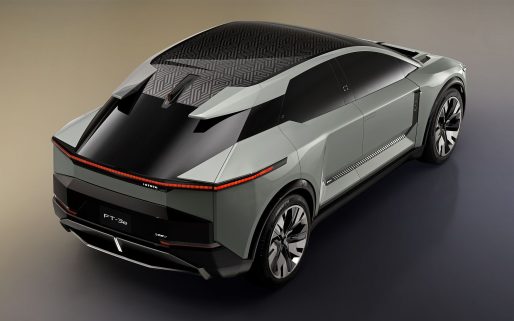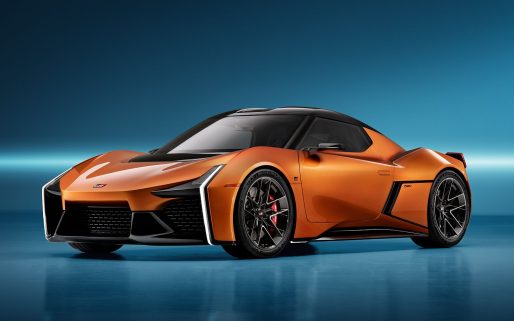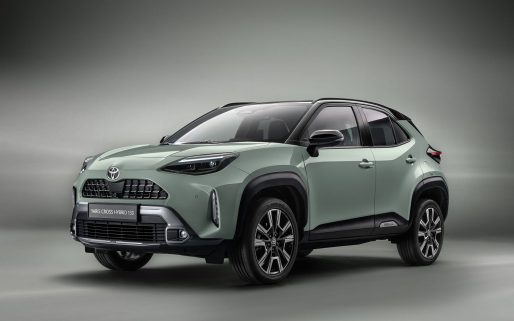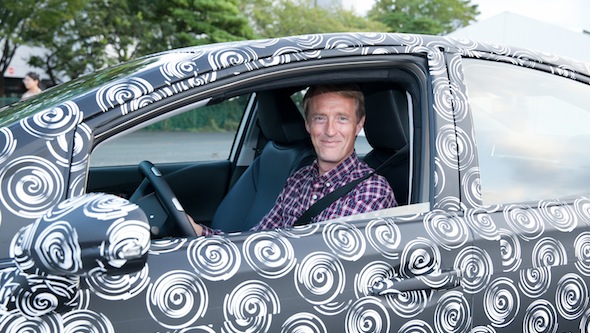
The motor industry has been fixated with driverless cars since experiments going back to wire-guided vehicles in the Twenties. Fully autonomous cars made their appearance in Japan in the Seventies, and every decade since has seen the technologies improve, writes motoring correspondent Andrew English.
This year’s Frankfurt Motor Show was notable for its autonomous driving concepts, and now Toyota has released a raft of technologies that bring the reality that bit closer. These include a 360-degree view parking assistance system, a pedestrian braking system, an advanced form of cruise control using wireless communication between vehicles, and a more accurate form of automatic lane-keeping.
However, the car industry remains cautious about the idea of vehicles taking to the roads by themselves.
“The key element is safety,” says Didier Leroy, chief executive of Toyota Europe. “We need to keep the driving pleasure for the driver, but we also want to keep the driver safe. We have the technologies [to make a driverless car], but the problem is making it affordable and legal responsibility is a big issue. This is not a game. You aren’t playing on a PlayStation with a second or third life.”
Toyota’s innovations are primarily aimed at improving safety for pedestrians and old folk. Recent traffic accident data from Japan shows that pedestrian fatalities have now overtaken those in passenger cars. They also reveal that a disproportionate number of older people are involved in accidents, whether as pedestrians or drivers, and that this trend is increasing. A study by the Japanese Society of Automotive Engineers also shows that 60-year-old drivers have significantly worse sight, particularly in low light, slightly less memory recall and powers of reasoning, and much slower reactions than their 30-year-old equivalents.
To protect vulnerable pedestrians and cyclists, Toyota already has an existing pre-collision avoidance system (PCS), introduced as an option on the new Land Cruiser V8 and current Lexus LS.
It gives visual and audible warnings of a potential collision and automatically applies the brakes if they are ignored. The sequence starts four seconds before potential impact and at speeds up to 43mph.
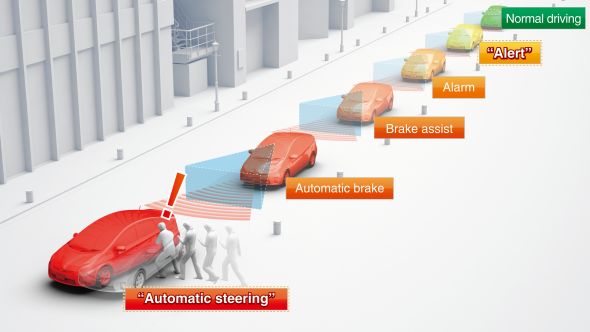
The latest improvement to this technology adds a steering function that automatically directs the car away from the pedestrian while staying in the marked traffic lane.
It uses advanced Light Detection and Ranging technology, although engineers admit that the price and acceptance of such systems is highly dependent on the cost of the sensors. Subsequent systems might therefore use simpler cameras instead. Toyota plans to introduce PCS across the entire Toyota range in the imminent future, supplemented by the automatic steering component as a similarly priced option from 2015 onwards.
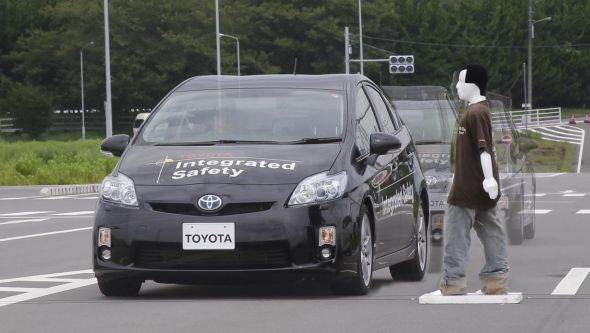
A Prius fitted with steering enhanced PCS performed well on a test track, though in the interests of demonstration, conditions were artificial. If it’s impossible to avoid a straying pedestrian on an empty track with four seconds notice, then perhaps you should be hanging up your licence…
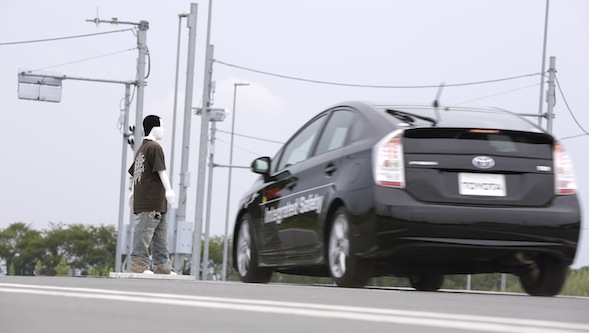
Another step towards full autonomous driving can be seen in Toyota’s development of vehicle-to-vehicle short-range wireless communications to improve cruise control systems. This works by sending information about acceleration and braking between vehicles to smooth progress and prevent the shunting that is so often a feature of motorway travel. It also increases safety by forewarning of braking ahead and reduces fuel consumption. In more advances versions it could also increase average speed and permit the electronic linking of platoons of vehicles.
In a demonstration of Toyota’s research prototype, it appeared to work well. Shota Fujii, a development engineer revealed to me that widespread adoption will depend on other vehicles having the same technology and using the same 700-MHz radio frequency.
At the same time, however, Toyota is one of eight car-makers working in the research consortium, looking into similar technology using the Dedicated Short Range Communications (DSRC) 5.9GHz bandwidth set aside by the US congress in 1999. This all sounds a bit like Betamax versus VHS, although Japanese authorities are far more likely to allow autonomous driving cars before litigation-happy America.
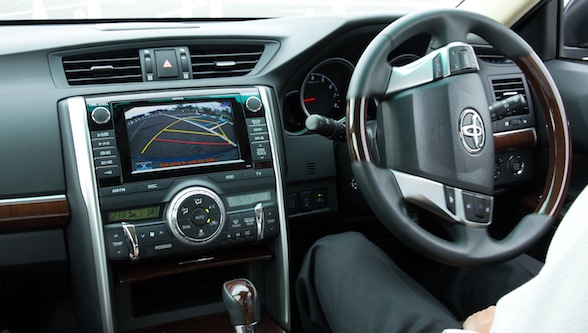
Lane Trace Control is a new form of lane-keeping assistance that uses high-performance cameras, millimetre-wave radar and control systems to adjust steering, engine torque and braking to maintain station within a marked lane.
In a demonstration on public roads, our driver took his hands off the wheel for several seconds at a time as the car steered itself round some acute curves on Tokyo’s elevated motorways. It works, although Toyota’s car preparation workshop will need to remove my fingernail indentations from the arm rest.
Both systems are currently on test in Japan and Michigan, North America. There is no on sale date but Yoshida dropped a heavy hint that by 2020, when Japan hosts the Olympics, he would like autonomous driving cars to be in use.
“We will have a new age transportation system for then,” he said.

